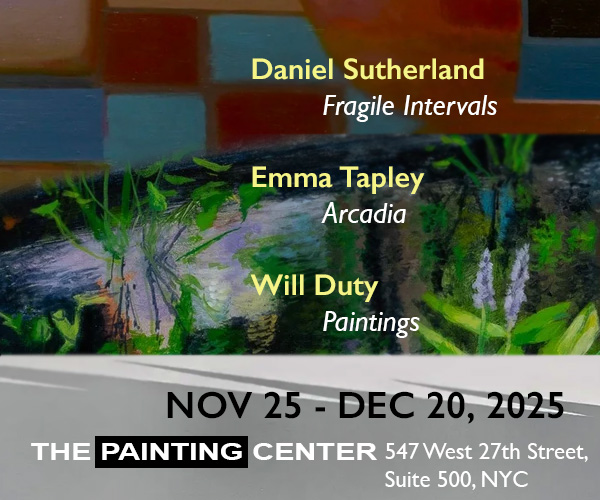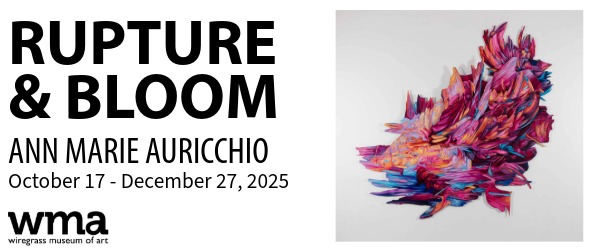
Contributed by Jonathan Stevenson / Florian Henckel von Donnersmarck�s film Never Look Away concerns a German painter named Kurt Barnert (the charismatic Tom Schilling), but it is an unabashed interpretation of Gerhard Richter�s life. Its style is seductively elegant and its script at once discursive and oblique � qualities that make the story�s ugly intrigue all the more jarring and unsettling. As Dana Goodyear chronicles in her nuanced account of the movie�s formation in The New Yorker, Donnersmarck closely consulted Richter and received clear signals that the painter credited the connections the director drew between the painter�s experiences and his work and articulated on the screen, even if the overall collaborative �understanding was precarious.� Richter�s passive scorn for the film appears to be evolutionary � perhaps an attempt to reclaim his own story or to restore mystery to motivations that he now considers better spirited from his canvases than dictated by a screenplay. Irrespective of the precise nature of the differences that have arisen between Richter and Donnersmarck, the film stands as a formidable examination of the capacity of art to redeem a fallen civilization. While the narrative ends in the mid-sixties, that idea resonates fiercely in the present moment.
The admonitory title seems almost snide; the film is riveting. Spanning 30 years, from 1936 to 1966, it frames several of Barnert�s boyhood traumas: the eugenically driven institutionalization of his doting and free-spirited but schizophrenic young aunt, who planted in Kurt the exhortation �never look away� and whom he would never see again; the deaths of his schoolmates in the Allied firebombing of Dresden; and the postwar suicide of his father, a teacher defrocked due to his membership in the Nazi Party. But perhaps the crowning agony occurs after he has married his girlfriend (Paula Beer, effective enough in an under-written part). Her father is Professor Carl Seeband (Sebastian Koch, convincingly satanic), an imperious sociopath concerned only with his own elite status who, unbeknown to Barnert and the East German authorities, is the very Nazi gynecologist who ordered his aunt executed. Seeband considers Barnert unsuited to carrying on his genetic line and aborts the young couple�s fetus under false medical pretenses. Although Barnert recognizes the soul-crushing cultural rigidity of “socialist realism,” escapes to West Germany, and in time clues to his father-in-law�s evil, he struggles to find the artistic voice he needs to make sense of his strife until he encounters the anti-pedagogy Professor Antonius van Verten � unmistakably a stand-in for Joseph Beuys, gnomically played by Oliver Masucci � at art school in D�sseldorf.

The pivotal scene is an epochal monologue. An uncharacteristically impressed van Verten has deigned to view Barnert�s work � a rare honor for an art student � but he is disappointed. The art the teacher sees, he tells the student, �is not you.� Van Verten then elaborates that until he, as a young Luftwaffe radio operator on a Stuka dive-bomber, had been shot down over Crimea and cared for by the Tatar nomads he was meant to exterminate, who tended his wounds with animal fat and felt for a year, he did not understand what really made him human. Only then did he flourish as a man and an artist. He does not say the word, but what he seemed to experience during his ordeal, as both receiver and giver, was essentially unconditional love. Donnersmarck thus suggests that this �grease and felt� quality of connective emotion reconciles the personal and the universal, which is the essential task of the artist. The idea might seem cheaply romantic were it not for the way the film links it to the quotidian practice and process of making art.
Barnert keeps plumbing his own memories and feelings. His conceptual trial-and-error and searching brushwork � Donnersmarck does not over-sentimentalize the artistic process as ineffable creative alchemy � eventually yield photorealist paintings that depict, among other things, the painter�s love for his pregnant wife, a halcyon childhood moment with his aunt, and war criminals. The first two � Ema (Nude on a Staircase),which more or less name-checks Duchamp�s groundbreaking work, and Woman With Child � are in fact foundational Richter paintings, with distinctly personal sources. His hallmark blurring imparts a tragically evanescent quality while his muted palette paradoxically suggests an engraved permanence: the fleeting moments that nonetheless stick in the psyche. �I believe that great art is deeply biographical,� Donnersmarck told Goodyear. Yet he presents without any obvious irony the mature Barnert, at a press conference during the opening of his breakout exhibition, denying the relevance of his life to his paintings. This stance, however disingenuous, serves the legitimate function of compelling the viewer to derive as much as he or she can from the work without reference to external aids. Neither Richter nor Donnersmarck is likely to have much use for verbose wall panels or Cliff�s Notes. The director is using Richter�s experience not so much to explain his work in particular as to explore the societal purpose of art.
Never Look Away does have its vexing aspects. It is well-known that, while Beuys was indeed shot down, his experience with the Tatars was almost certainly fabricated, which arguably taints van Verten. Although Beuys taught at the Kunstakademie D�sseldorf and influenced Richter, Beuys was not Richter�s mentor, making the film�s account somewhat infelicitous. Many artists may also find Donnersmarck�s views about the role of art didactic and facile and his depiction of Barnert�s process gratuitously slick and showy, just as numerous Germans considered his depiction of East Germany in the indisputably affecting The Lives of Others presumptuously simplistic. But these are matters of artistic license more than philosophical validity, and the movie�s vaulting cultural power renders them forgivable. While the most improbable aspect of the narrative � the coincidence of Seeband being both the executioner of Barnert�s aunt and the father of his wife � may tax credulity, it is a substantially true reflection of Richter�s life. And some apparent shortcomings may be intentional. Barnert�s part is elliptically written so that he often seems to be a cipher. But Donnersmarck may want to portray him as aloof and unformed until he taps his artistic source in the 1960s.
From the retrospective vantage of 1966 (or 2019), a wiser, more complete Barnert has sprung from a pensive Zelig darting through the hellish mid-twentieth century, slowly activating his art as an existential solution. There is of course a fancifully grandiose cast to this utopian notion that Richter would probably be loath to endorse, and that may be one of his objections to the movie. Donnersmarck admitted to Goodyear that �this is the �Citizen Kane� version� of a real figure�s story. But there is one crucial difference: unlike Welles�s classic film, Never Look Away portrays its subject as a hero. In context, Barnert�s lapidary valediction that �everything that�s true is beautiful,� like Keats�s immortal verse, is not hopelessly enigmatic but constructively elusive: it keeps us reaching for truth. Despite its faults, Never Look Away is dazzling, provocative, and inspiring cinema. Maybe Richter himself should reconsider his appraisal.
Never Look Away, written and directed by Florian Henckel von Donnersmarck.
Related posts:
Recreating Richter�s destroyed paintings
Gerhard Richter�s stock is up
Gerhard Richter scandalized by German choice for 2011 Venice Biennale






















